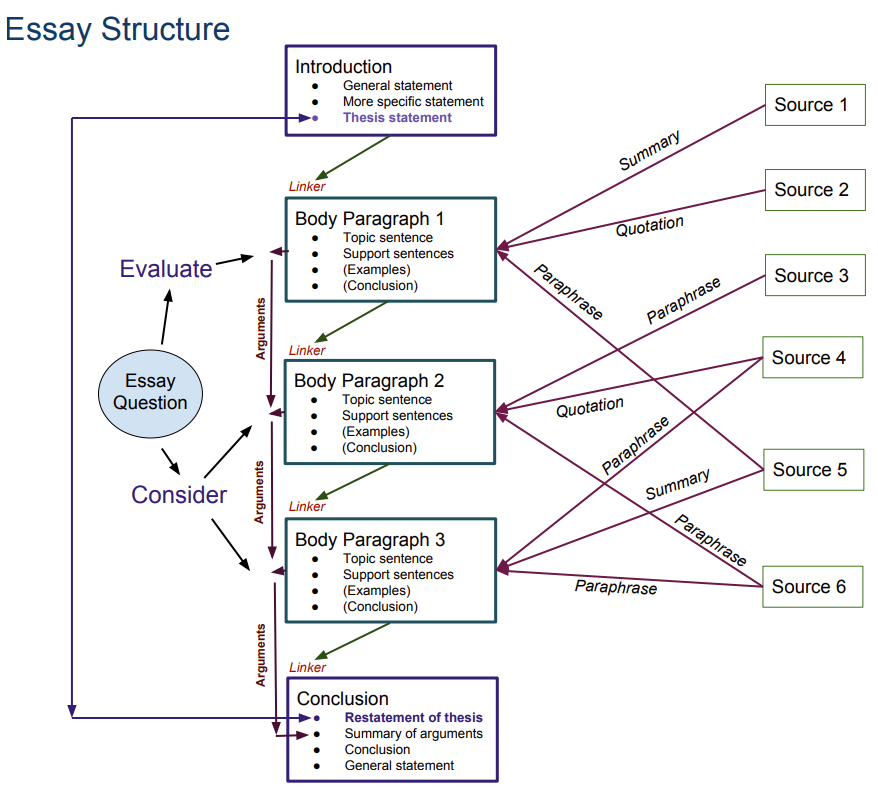This blog shows an overview of the basic structure of an academic essay.
An academic essay usually contains:
- A clear thesis (purpose)
- An introduction
- A thesis statement
- A body
- A conclusion
- A reference list
- Clear Thesis (Purpose)
- Introduction
- Thesis Statement
- Body
- Conclusion
- Reference List
- Essay Structure Diagram
Clear Thesis (Purpose)
- A thesis is a line of argument and identified purpose
- It can be an argument that needs support and discussion, an enquiry that requires exploration, a suggestion that requires evaluation, etc.
- A thesis should be clearly stated in the introduction.
- All paragraphs (topics/points) should be linked clearly to the thesis (purpose) of the essay
- This is normally done in the first and/or last sentence of the paragraph
Introduction
- Introduces why this topic is interesting
- Justify why this should be written and read
- Summarises key points that will be discussed later
- Show the reader what issues will be covered and how your essay is organised
- Offers a thesis statement
- State the purpose of the essay and the point(s) it is making
For more details refer to:
Thesis Statement
- Is written in the introduction, usually as the last sentence(s)
- Shows very clearly what the focus of the essay is and what it is doing
- States the nature and purpose of the essay (e.g. to argue, analyse, suggest, identify, evaluate, etc.)
- Communicates the position of the author to the subject.
- Unlike many novels or stories, surprises or twists should not appear in essays
- The opinion and ideas of the author must be clear in the thesis statement and in the essay as a whole
Body
- Divides part of the discussion into topics
- Keeps topics in paragraphs of similar sizes
- Offers evidence, details and deep discussion that are not in the introduction and conclusion
- Maintains focus on answering the essay question throughout
- Divides purposes of topics – e.g. cause & effect, problem & solution, analysis & interpretation
For more details refer to:
Conclusion
- Reminds the reader of the thesis (main purpose / point of the essay)
- Summarises the key points of the discussion / information above
- This does not include unnecessary details or new information: Details and important points should be in the body
- Offers a conclusion based on the discussion so far
- This can include implications, future possibilities, suggestions or recommendations, or a concluding point
For more details refer to:
Reference List
- Shows what the author has read
- Allows the reader to check information and find further reading
- Makes it clear that ideas and evidence can be located in publications/sources
- This shows that it is not false information or opinions
- Complies to laws of copyright and academic integrity, which are important parts of academic practice
For more details refer to:
- Academic Integrity
- How to find reliable sources for academic essay?
- How to cite sources in academic essay?
Essay Structure Diagram

